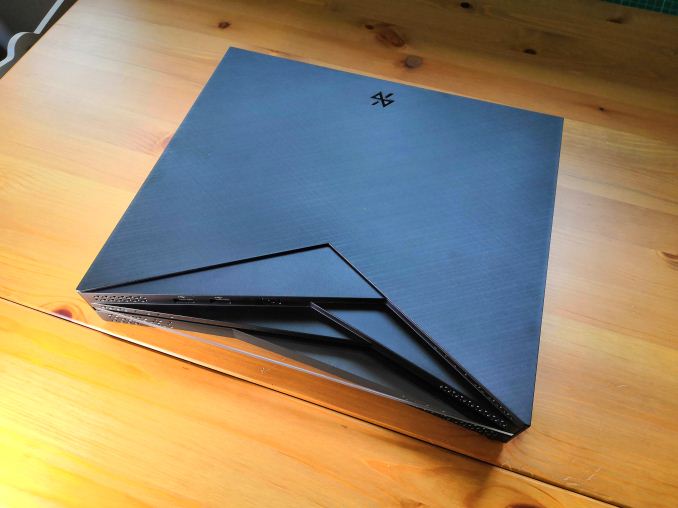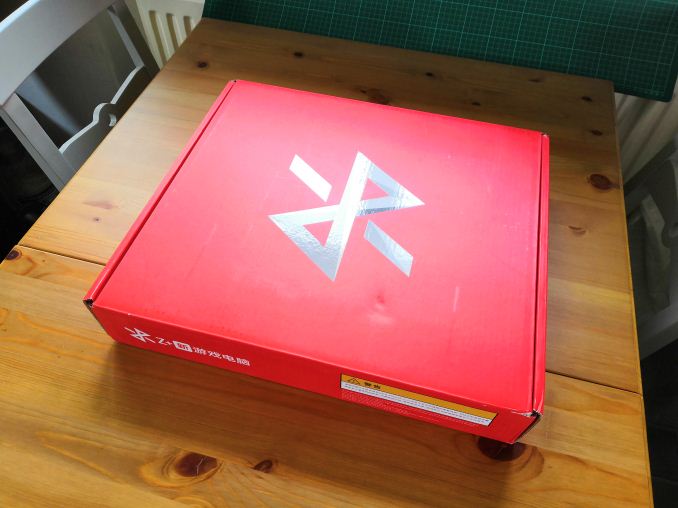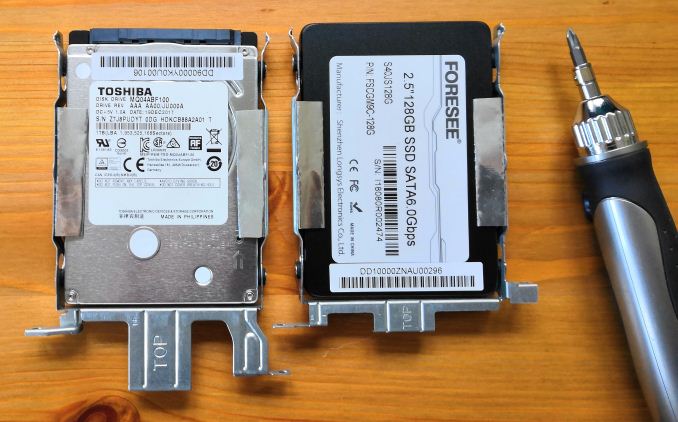A Quick Look at the Subor Z+ Console/PC Hybrid: A Custom AMD SoC Called FireFlight
by Ian Cutress on September 19, 2018 5:45 PM EST
One of the most interesting things in August (there were a lot) was that a company in China invested the best part of 400 million RMB / $60 million USD in a custom processor for its upcoming console and PC hybrid system. This processor comes from AMD’s Semi-Custom Division, and uses four Zen cores paired with 24 Vega compute units, making a beefy APU for a console system and a sizeable performer as a PC. One of the unique parts about the chip is that it uses GDDR5 for both CPU and GPU, which will be critical to its performance.
We have covered the initial launch of PlayRuyi’s Subor Z+ console in two articles, slowly going into more details as and when we get them:
- AMD Creates Quad Core Zen SoC with 24 Vega CUs for Chinese Consoles
- More Details About the ZhongShan Subor Z+ Console, with Custom AMD Ryzen SoC
On the back of those pieces, the product manager for the Subor Z+ got in touch with me via email. We have sent some questions back and forth, but the crux of the communication is that they have sent us a Z+ for review.
This is going to be fun. They’ve told as a lot. I mean, more than I ever expected. I'll save the juicy details for the full review.
The Z+ only arrived yesterday, so it's being tested for the full review. For now though, I wanted to publish something to whet the appetite. Be forewarned, I’m really bad at making videos like this. But here’s 25 minutes of starting the system up for the first time, and some benchmarks.
The codename for the SoC is ‘FireFlight’, which translates as Fenghuang. If some readers who were following the leaks on popular benchmarking websites were wondering, that’s the connection. It also explains why the graphics are labelled as ‘15FF’ – where FF stands for FireFlight.
On the hardware side, the console is listed as having:
- Four Ryzen Cores at 3.0 GHz, with Simultaneous Multi Threading
- 24 CUs of Radeon Vega, at 1.3 GHz, for 4 TFLOPs compute
- 8GB of GDDR5 at 256 GB/s
- OS Option 1 (PC Mode): Windows 10
- OS Option 2 (Console Mode): Windows 10 with Z+ Custom Interface
- Low Power Modes supported, with 30W 'background download' power
- 4.9 liter body, built-power supply, 'excellent' heat dissipation design
- 'Ultra-Mute' 33 dB at full horsepower
- Customizable appearance for unique designs
- 802.11ac WiFi, BlueTooth 4.1 (WiFi Module unknown)
- Storage is supplied through a 128GB M.2 SSD and optional 1TB HDD
- Audio stack supports SPDIF
- HDMI 2.0 is supported, as well as VR, 4K60, and HDCP 1.4
- System has four USB 3.0 ports and two USB 2.0 ports
We’ll aim for a full review in a couple of weeks, with our new GPU benchmark suite, as well as tests on the GDDR5. For now I need to work out what a good GPU comparison point might be. Kaby G? But that has HBM... Suggestions and thoughts are very welcome.














40 Comments
View All Comments
jjj - Thursday, September 20, 2018 - link
Wonder when cars will have something like this for console grade gaming, they got to try and make autonomy as comfy and fun as possible.eastcoast_pete - Thursday, September 20, 2018 - link
Thanks Ian, hope the teasing for the full review doesn't last for weeks! The Hades Canyon setup is the most logical comparison on the PC side, maybe with a Ryzen 2400G with fast DDR4 and overclocked GPU as the lower-cost alternative.Also, while this really looks like an attractive alternative to a PS4Pro or Xbox OneX (which means one still needs a PC for other stuff), I wonder if the manufacturer (PlayRuyi) has considered an +8 variant of this system - basically, add 8 GB of DDR4 for the CPU to the board, and reserve the entire 8 GB GDDR5 for the GPU; an additional $50-70 or so would be money I'd gladly spend for this. The lower latency DDR4 would likely even speed up the CPU, and prevent any drop in graphics performance I'd expect in the current unified memory setup when the CPU accesses larger chunks of the currently shared GDDR5.
csell - Thursday, September 20, 2018 - link
Nice idea with the 8 GB DDR4. I hope they will make an empty DDR4 DIMM socket in the next version of the motherboard.But I wonder what kind of Antivirus that will be possible?
abufrejoval - Wednesday, September 26, 2018 - link
I'd love to know if the SoC even has pins for extra RAM: Every pin costs extra so in a cost optimized SoC I don't see that happen: It's a single life cycle product I'd guess.Zingam - Friday, September 21, 2018 - link
Not enough RAM. Not enough RAM.abufrejoval - Wednesday, September 26, 2018 - link
I guess more RAM in a GPU design means an almost square cost curve as you have to increase everything to keep the performance balance.The real problem is that game engines assume DRAM is plentyful and cheap and at least 8GB for 2GB of GPU RAM. So here we have 2GB missing from a "typical configuration" and while games could be adapted for that, they currently are not: Chicken and eggs...
abufrejoval - Wednesday, September 26, 2018 - link
I am a bit worried about the custom drivers: Could turn out to be the most limiting factor in terms of obsolescence.I wonder if Linux drivers work and I'd just love to do HSA tests.
kartikguha - Friday, October 26, 2018 - link
Still waiting for that review...May be use 2400g and mid level cards for comparison (RX 580/GTX 1060?); no need to go for Vega M variants (Kaby G).
It will give us a preview of HW capabilities of next PS/Xbox.
badbanana - Thursday, January 17, 2019 - link
and it's still using the Von Neumann design right?looncraz - Thursday, January 17, 2019 - link
I want a picture of the APU...